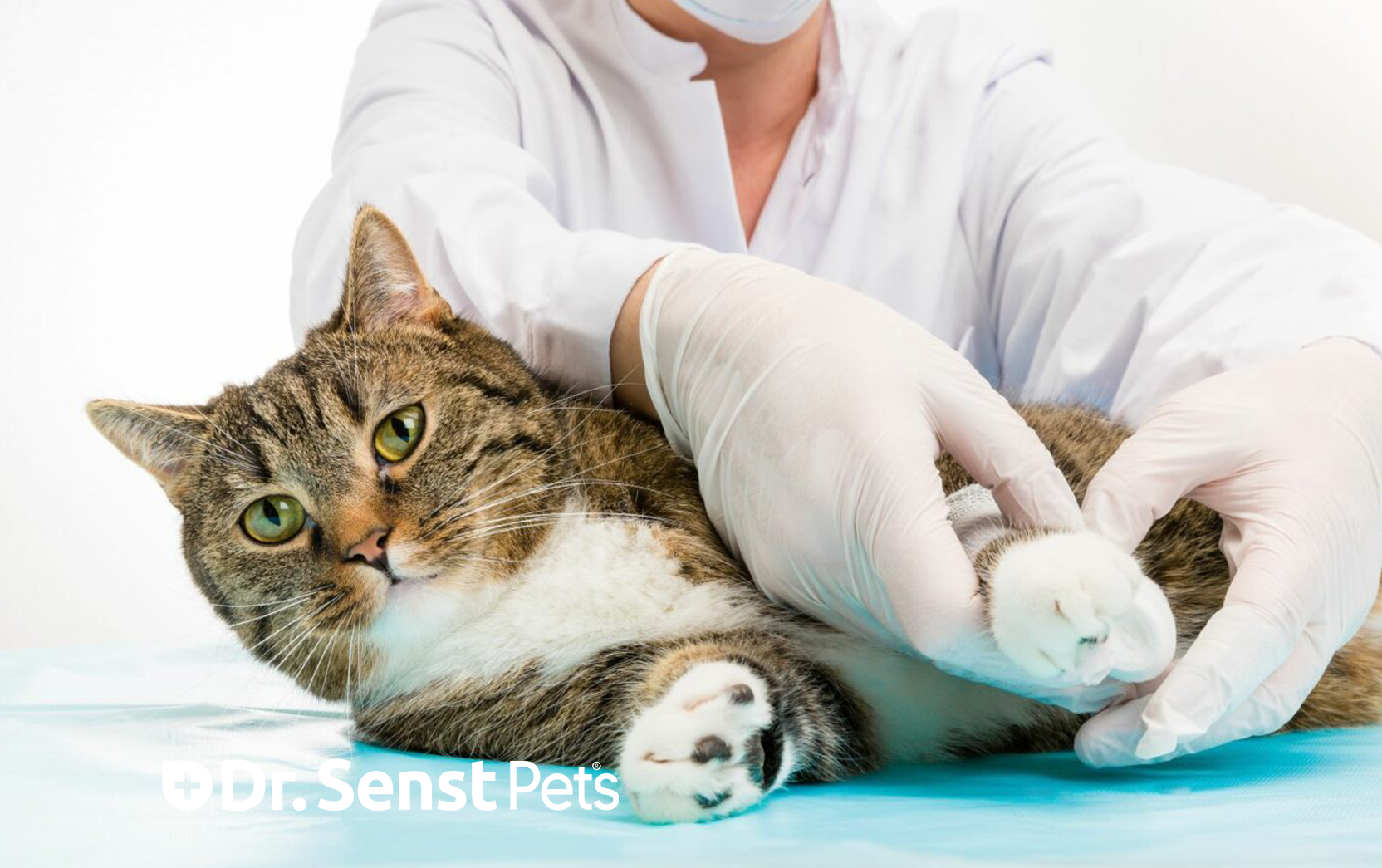
- by Dr.Thilo Senst
Caring for a Cat with an Abscessed Wound: Treatment & Recovery
- by Dr.Thilo Senst
Caring for a Cat with an Abscessed Wound: Essential Tips for Recovery
Cats are adventurous creatures, often venturing into situations that can lead to cuts, scrapes, and bites. Due to their independent and sometimes territorial nature, they may engage in fights with other cats or animals, leading to abscesses and infections. If you’ve noticed a swollen, red area on your cat, it may be an abscess—a painful condition that requires immediate attention to prevent further complications. This guide will explain how to care for a cat with an abscessed wound, from initial treatment to recovery tips.
An abscess is a localised pocket of infection, usually filled with pus. It typically results from a wound that allows bacteria to enter the skin, causing an infection. The wound site becomes swollen, painful, and may leak fluid if it bursts. Commonly, abscesses develop after a fight or a bite wound, as the bacteria in a cat’s mouth can lead to rapid infection in another cat.
According to the PDSA (People's Dispensary for Sick Animals), around 40% of the cases they handle each year involve cats with some form of abscess or infection, often resulting from outdoor activities.
Bites from other cats or animals are one of the most common causes of abscesses in cats. When a cat’s sharp teeth puncture the skin, bacteria are quickly transferred, creating an infection under the surface.
Cats may also sustain wounds from scratches, which can become infected, especially if the scratch penetrates deeply.
Sometimes, a foreign object like a thorn or splinter may get embedded in the skin, causing an infection if not promptly removed.
Knowing how to identify an abscess in its early stages is crucial for timely treatment. Here are the most common symptoms:
An abscess that’s left untreated can lead to serious complications, including sepsis, which requires immediate veterinary intervention.
If you’ve identified an abscess or suspect an infection, gently clean the area. Use warm saline water or a cat-safe antiseptic solution to cleanse the wound. Dr. Senst Antiseptic Cat Wound Relief Spray is an excellent product to have on hand, as it provides antiseptic properties to help prevent infection.
If the abscess has already ruptured, you can gently clean the area to remove any pus. However, avoid applying too much pressure, as this can worsen the infection. For deeper or closed abscesses, it’s best to consult a vet, as they may require draining under professional care.
To protect the wound from further infection, apply an antiseptic solution designed for pets. A product like Dr. Senst Antiseptic Cat Wound Relief Spray can help disinfect the wound, reduce inflammation, and aid healing.
Cats are known for hiding pain, so observe any changes in behaviour, such as excessive licking, limping, or refusing to eat, which can signal discomfort or a worsening infection.
Early intervention in treating cat wounds has many benefits, such as preventing complications and reducing the risk of spreading the infection.
Prompt treatment stops bacteria from spreading into surrounding tissue, reducing the likelihood of systemic infection.
An abscess that’s cared for quickly can heal faster and with less pain. Treating the wound with antiseptic products promotes faster recovery.
A treated wound ensures your cat feels more comfortable and less stressed. Untreated infections can cause pain, lethargy, and behavioural changes.
Limiting outdoor access during the healing period helps prevent re-injury or exposure to additional bacteria.
If your cat keeps licking the wound, consider using a cone collar. Excessive licking can delay healing and potentially reintroduce bacteria to the area.
Regularly cleaning the wound with a pet-safe antiseptic solution ensures bacteria don’t thrive and minimises the risk of further infection.
Regular health check-ups are crucial, especially if your cat frequently goes outdoors. Early detection of wounds or infections can prevent abscess formation.
Scratching due to fleas or ticks can lead to open wounds, making your cat more susceptible to infections. Using flea control measures can help prevent this.
Neutering your cat is known to reduce aggressive behaviour, which lowers the likelihood of fights and resulting injuries.
Q1: How long does it take for a cat abscess to heal?
A: With proper treatment, most abscesses heal within 1 to 2 weeks. However, severe cases may require longer recovery times.
Q2: Can I treat a cat abscess at home?
A: Minor abscesses can be managed at home with appropriate cleaning and antiseptic treatment. However, for more serious infections, consult a vet.
Q3: What are the signs of an infected cat wound?
A: Signs of infection include swelling, redness, warmth, pus, and foul odour. Infected wounds may also cause fever or lethargy in your cat.
When managing cat wounds, especially abscessed wounds, it’s essential to have the right products on hand. Here are a few from the Dr. Senst range that can support healing and provide relief:
Using these Dr. Senst products as part of a comprehensive wound care routine will support your cat’s recovery and ensure that they stay healthy and infection-free.
![]()
Enter your details & download our comprehensive 50+ page printable Dr. Senst Pet Care Planner completley FREE! - keep track of all your pet’s needs, from medical history and training to vet visits, grooming, diet, and more!










Share:
Understanding Dog Flea Bite Allergies: Symptoms & Treatments
Do Indoor Cats Need Ear Care? Importance of Regular Cat Ear Cleaning